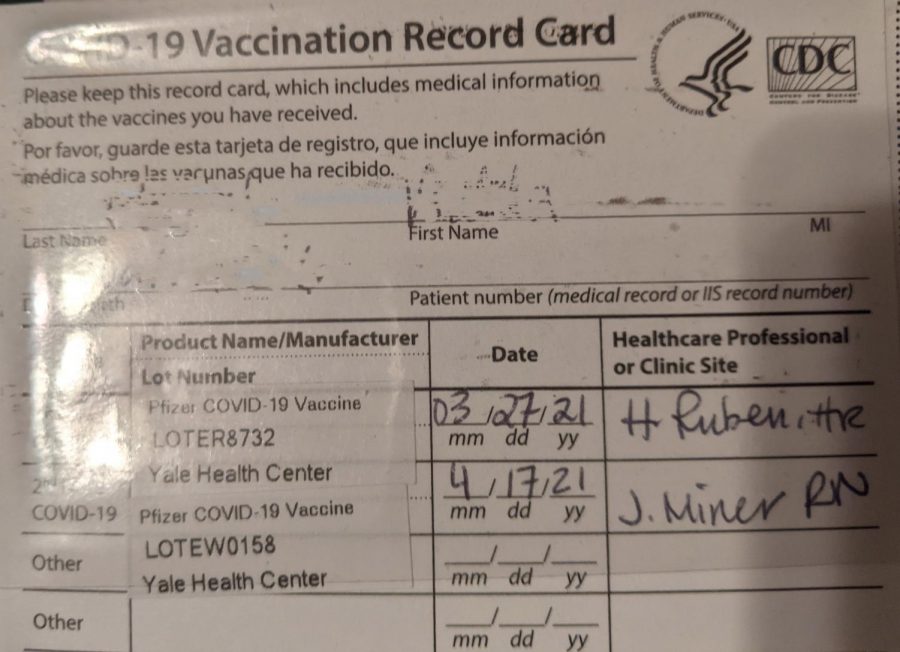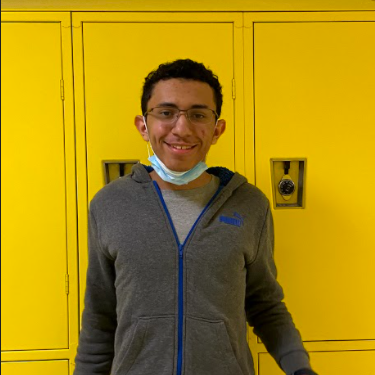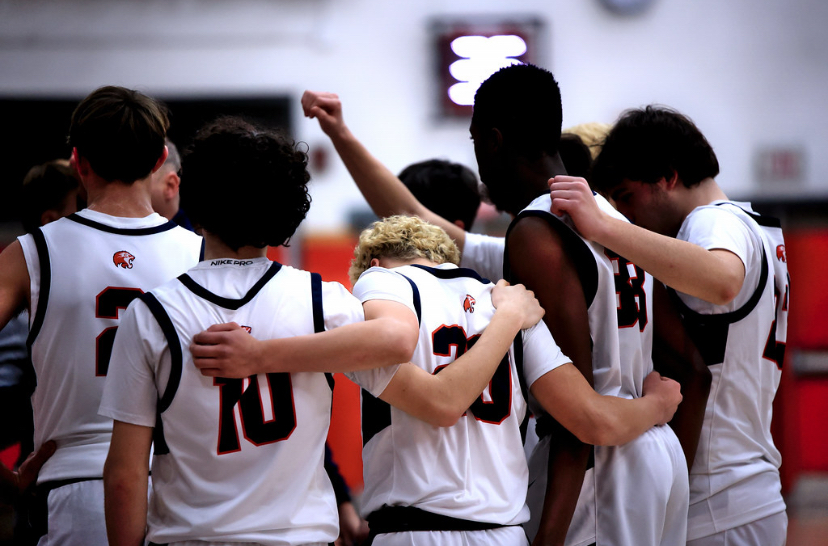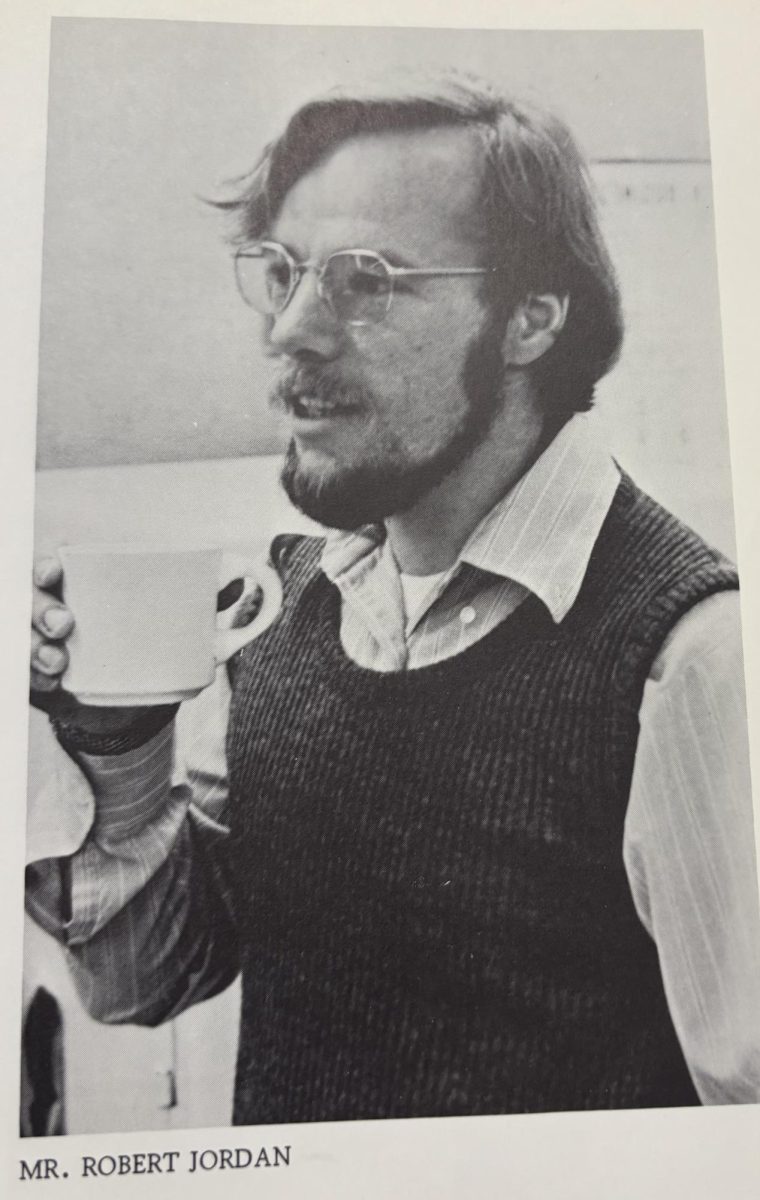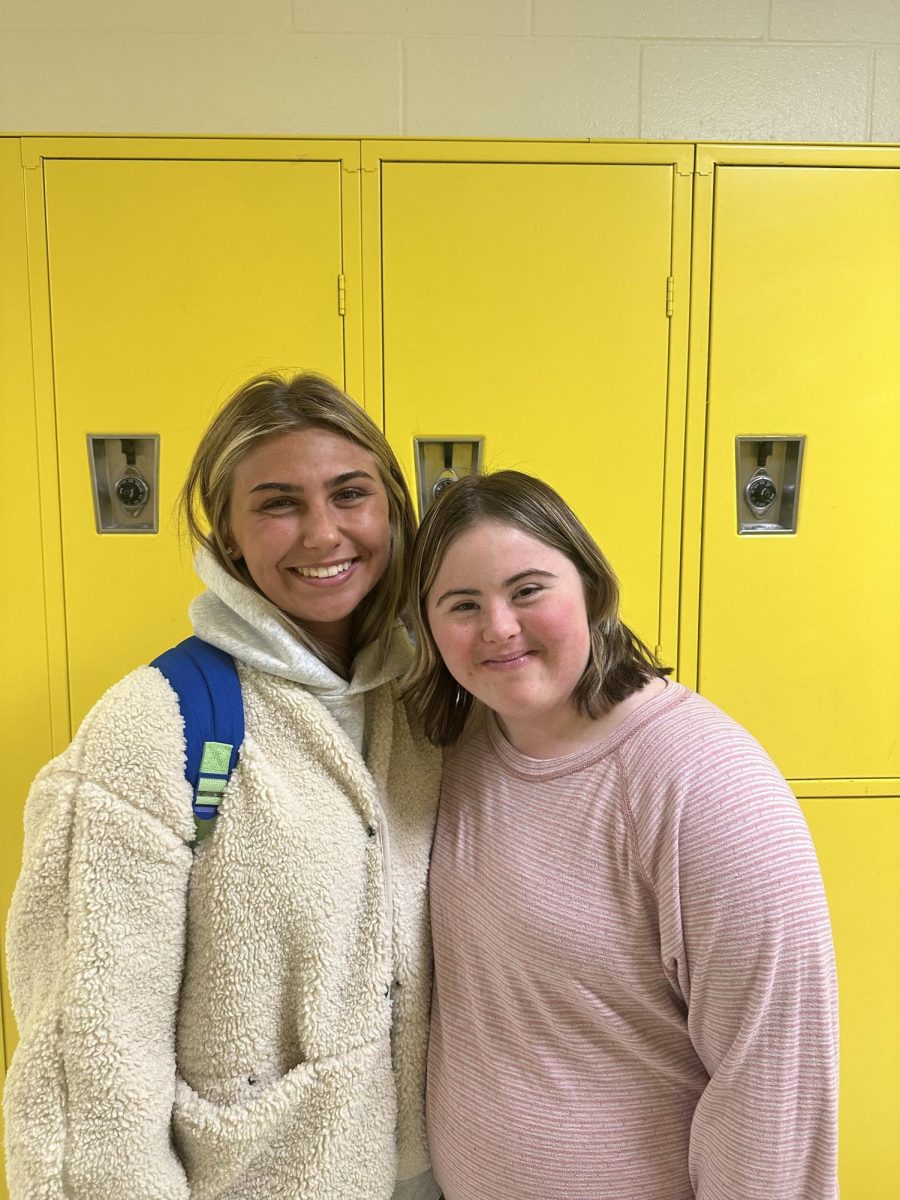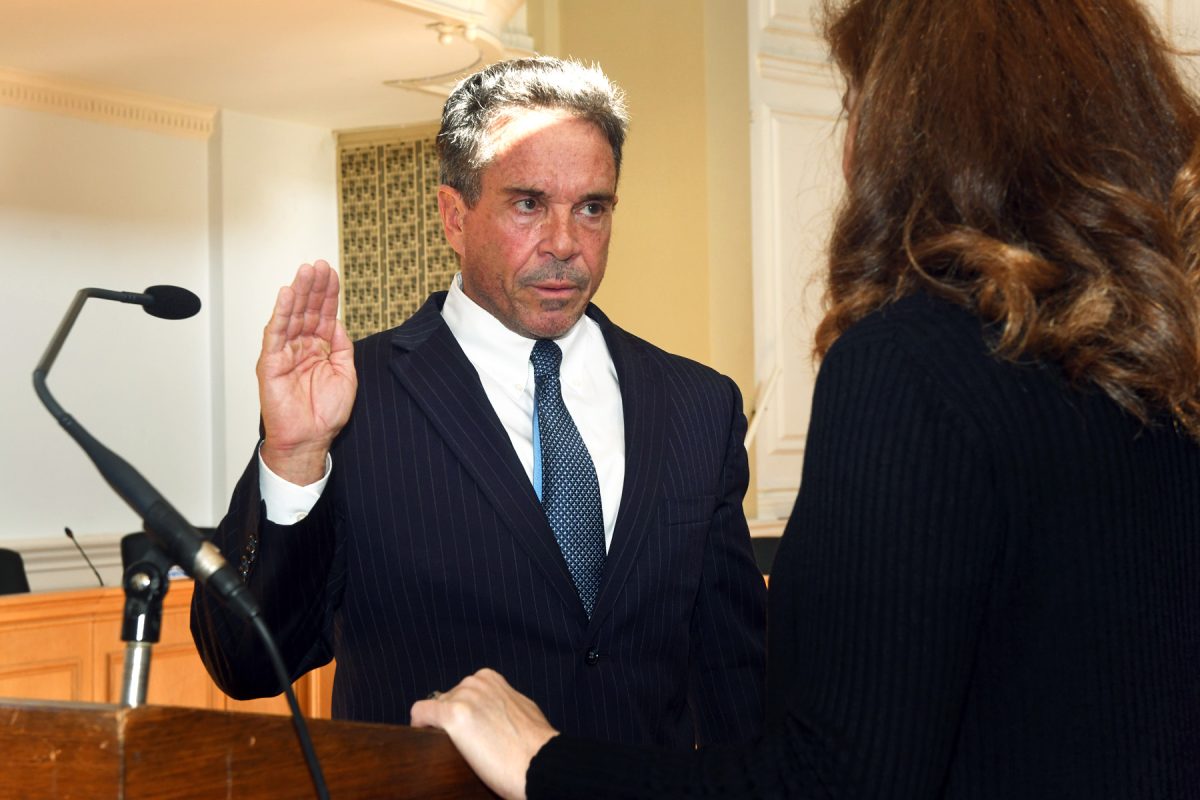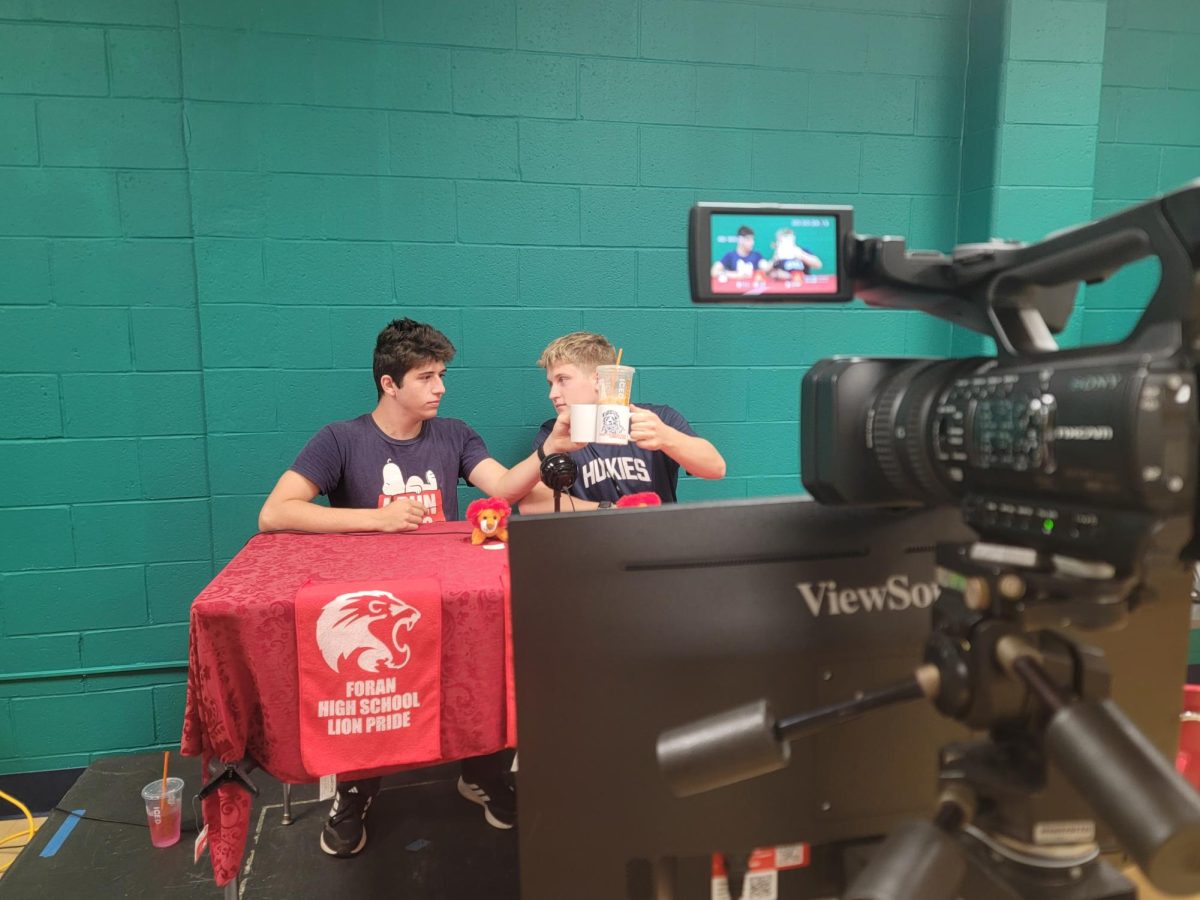Fully Vaccinated
Connecticut is Third in U.S. Covid-19 Vaccine Rollout
A vaccination card by the CDC showing a fully vaccinated person. Photo Courtesy: Yusuf Abdelsalam, May 4, 2021
May 19, 2021
After a year of restrictions and isolation, perhaps an end is in sight for the changes since the pandemic. The U.S. vaccine rollout has been speeding up as all adults in the country have been eligible since April 19. Connecticut’s distribution of the vaccine has also been higher than the national average. As of May 17, 2021, according to the New York Times’ Covid-19 vaccine state tracker, Connecticut has the third highest number of people that are fully vaccinated, after Maine and New Hampshire.
There are currently three vaccines in use in the United States: Pfizer, Moderna, and Johnson & Johnson. Pfizer and Moderna are both two doses for full vaccination while Johnson & Johnson’s is only one dose for full vaccination. Pfizer and Moderna’s vaccine efficacy rate in clinical trials is about 95 percent, while Johnson & Johnson’s vaccine efficacy rate is 72 percent in the United States.
According to Jeffrey Carson, a professor of medicine at Rutgers Robert Wood Johnson Medical School, comparing the efficacy rate can be misleading. He explains, “The best COVID-19 vaccine is the one you get, those statistics reflect only a snapshot of the time when the clinical trials were in progress.”
All the vaccines have been nearly 100 percent effective in preventing severe disease and death. The Johnson & Johnson’s vaccine was paused on April 13 by the federal government following reports of blood clots in a small number of patients. The pause has now been lifted and officials say the overall risk of clots is extremely low. The blood clots reported have only been confirmed to be linked to the vaccine, but not caused by it.
Most teachers in Connecticut have been eligible and have gotten the vaccine by now, including Foran High School. Science teacher, Mrs. Laura Donovan, is one of them.
She says, “With the first dose, I had a very sore arm for a couple days. With the second dose, I had a fever with some chills and achiness.”
Most of the side effects that Donovan had are fairly common among those who have had the vaccine. Linda Bespuda, the school nurse, “had very mild symptoms, short lived- for less than a day following the second dose.”
It is nearing the end of the school year and it is still a bit uncertain what next year will look like, depending on the circumstances of the vaccine rate among high school students and the general population. According to The New York Times, the CDC and FDA have approved use of the Pfizer vaccine on 12-15 year olds.
Mrs. Laura Donovan says, “I don’t really know what next year is going to look like. I can only hope that we return to a little more normalcy in our school days. I think schooling during this pandemic has really shifted our focus to finding ways to use new technologies and digital platforms for teaching and learning. Even when the threat of the pandemic is gone, I do believe some of these digital methods and resources will still be widely used in classrooms.”
Mrs. Marla Kosenski, a French teacher, says, “I think many of our protocols will still be in place, given the continued presence of Covid-19 as well as new variants that arise. Being that vaccines are not 100% effective, these safety measures are critical to continue for our health and well-being. I do believe there will be some permanent changes because, for over a year now, we have been teaching and learning so differently that it is bound to have some lasting effects; the most efficacious and pedagogically-sound methods would be retained and the not-so-effective techniques will be improved or retired.”
Starting May 19 in Connecticut, fully vaccinated people will not be required to wear masks in businesses and large gatherings and events. Schools however, fall into another category.


